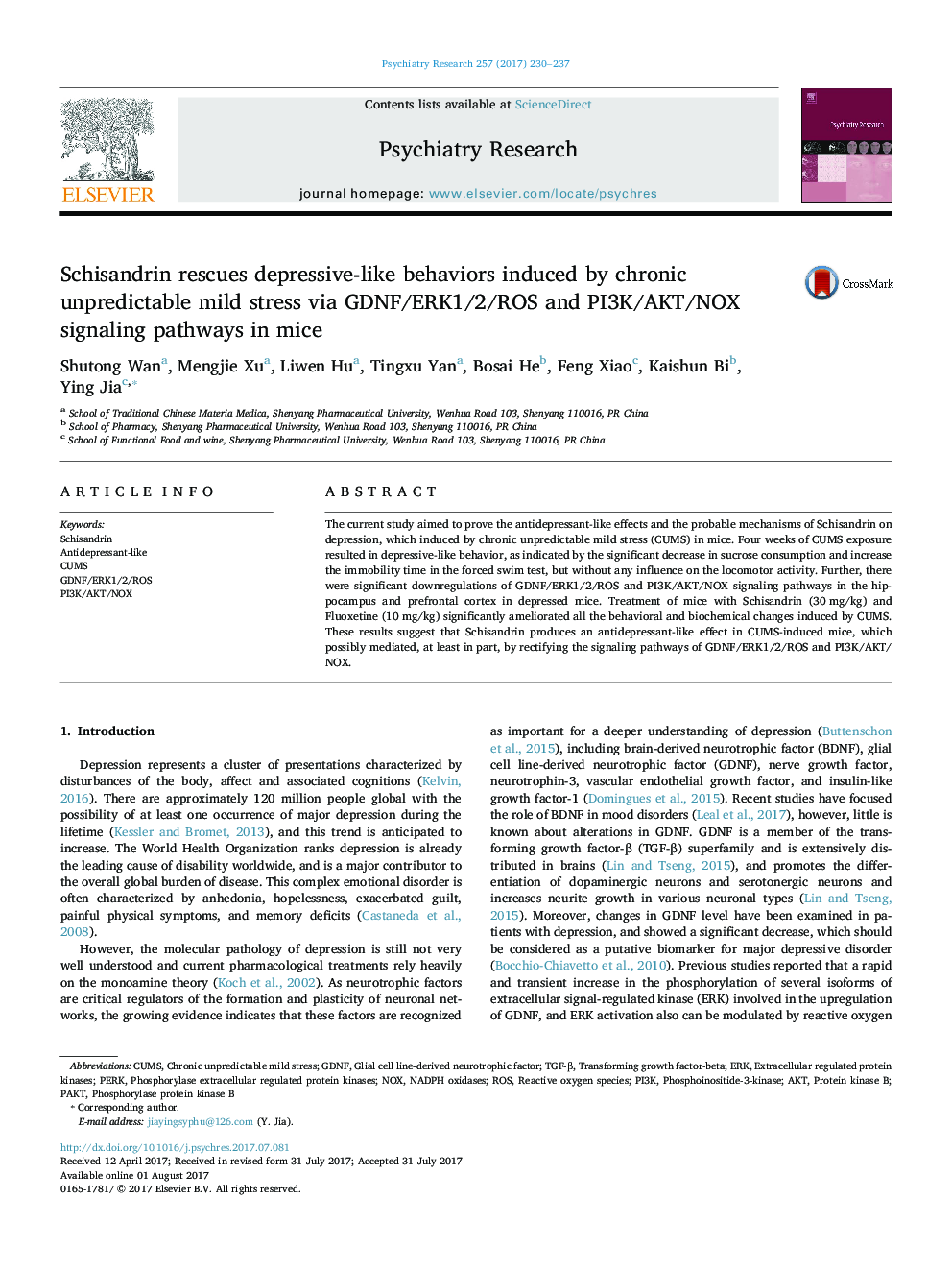| Article ID | Journal | Published Year | Pages | File Type |
|---|---|---|---|---|
| 4933485 | Psychiatry Research | 2017 | 8 Pages |
Abstract
The current study aimed to prove the antidepressant-like effects and the probable mechanisms of Schisandrin on depression, which induced by chronic unpredictable mild stress (CUMS) in mice. Four weeks of CUMS exposure resulted in depressive-like behavior, as indicated by the significant decrease in sucrose consumption and increase the immobility time in the forced swim test, but without any influence on the locomotor activity. Further, there were significant downregulations of GDNF/ERK1/2/ROS and PI3K/AKT/NOX signaling pathways in the hippocampus and prefrontal cortex in depressed mice. Treatment of mice with Schisandrin (30Â mg/kg) and Fluoxetine (10Â mg/kg) significantly ameliorated all the behavioral and biochemical changes induced by CUMS. These results suggest that Schisandrin produces an antidepressant-like effect in CUMS-induced mice, which possibly mediated, at least in part, by rectifying the signaling pathways of GDNF/ERK1/2/ROS and PI3K/AKT/NOX.
Keywords
Related Topics
Life Sciences
Neuroscience
Biological Psychiatry
Authors
Shutong Wan, Mengjie Xu, Liwen Hu, Tingxu Yan, Bosai He, Feng Xiao, Kaishun Bi, Ying Jia,
